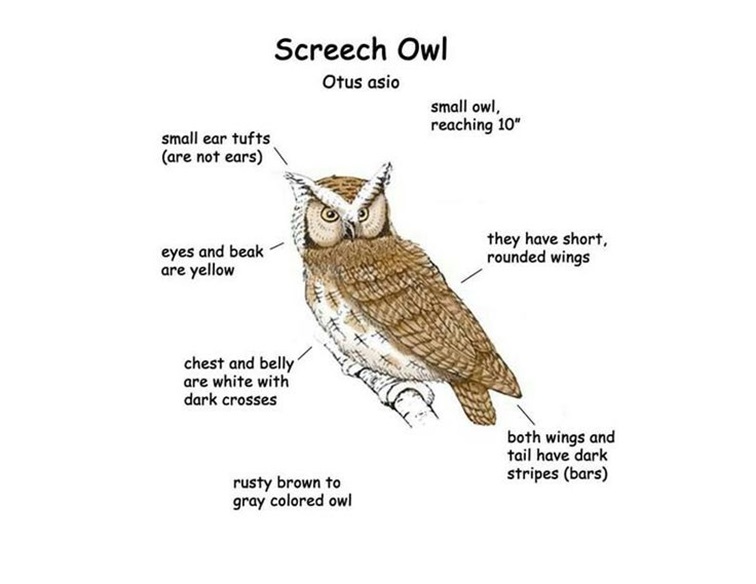Owls are extraordinary birds, often associated with wisdom, mystery, and nocturnal beauty. These remarkable creatures have unique anatomical features that enable them to thrive as skilled hunters in their habitats. This article explores the different body parts of an owl and their specific functions, delving into how each contributes to the owl’s success as a predator.
A Body Part of A Owl

1. Eyes
One of the most striking features of an owl is its large, forward-facing eyes. These eyes are specially adapted for night vision, making them highly effective hunters in low-light conditions. Unlike human eyes, an owl’s eyes are tubular rather than spherical, which allows for a larger retina. This design helps them gather more light, enhancing their ability to see in the dark.
Owls are also known for their exceptional depth perception. Their binocular vision enables them to accurately judge distances, which is crucial when swooping down on prey. However, their eyes are fixed in their sockets, meaning they cannot move them around like humans can. To compensate for this, owls have evolved incredibly flexible necks.
2. Neck
Owls have an astonishingly flexible neck, capable of rotating up to 270 degrees. This ability is made possible by having 14 cervical vertebrae (compared to the seven found in humans). The flexibility allows owls to look in almost every direction without moving their bodies. This is especially important since their eyes are immobile.
The neck’s flexibility also plays a vital role during hunting. By rotating their heads silently and swiftly, owls can scan their surroundings for potential prey without revealing their presence. Additionally, their necks house a highly efficient vascular system that ensures uninterrupted blood flow to the brain, even during extreme head rotations.
3. Beak
An owl’s beak is sharp, curved, and designed for tearing flesh. Unlike other birds, owls have relatively small beaks compared to their overall head size. This is because their beak’s compact size allows their facial feathers to create a disc-like shape that enhances their hearing (more on this below).
The beak’s hooked tip is perfect for gripping and tearing prey into smaller, digestible pieces. The powerful muscles around the beak add to its effectiveness, enabling owls to kill prey quickly and efficiently.
4. Facial Disc
The facial disc is one of the owl’s most distinctive features. This circular arrangement of feathers acts like a satellite dish, funneling sound waves toward the owl’s ears. The facial disc is adjustable; owls can manipulate the feathers to focus on sounds coming from specific directions, greatly enhancing their hearing.
This adaptation is especially crucial for hunting in complete darkness. Many owls can locate prey based solely on sound, even under snow or dense foliage. The symmetry and shape of the facial disc are key to this remarkable ability.
5. Ears
Owls have asymmetrically placed ears, meaning one ear is often higher than the other. This arrangement allows them to pinpoint the exact location of sounds in three dimensions. When a sound reaches one ear slightly earlier or louder than the other, the owl’s brain calculates the direction and distance of the source.
This exceptional auditory ability is vital for hunting in environments where visibility is limited. For example, the barn owl can detect the faint rustle of a mouse from several meters away, even in pitch darkness. Some owls have feather tufts on their heads, often mistaken for ears, but these are primarily used for camouflage or communication.
6. Wings
An owl’s wings are broad and rounded, designed for silent flight. The primary feathers on the edges of their wings have a comb-like structure that breaks up turbulence, reducing noise as they fly. This silent flight is a significant advantage, allowing owls to approach their prey undetected.
Additionally, the large surface area of their wings provides excellent lift, enabling owls to glide effortlessly through the air. This is particularly useful for conserving energy during long hunting sessions.
7. Feathers
Owls’ feathers are soft and specially adapted to minimize sound during flight. The edges of their flight feathers are fringed, which helps muffle the noise created by air turbulence. This adaptation is unique to owls and contributes to their reputation as stealthy hunters.
Beyond aiding in silent flight, their feathers also provide insulation. Many owl species inhabit cold environments, and their dense plumage helps maintain body heat. The feathers’ coloration often matches the owl’s surroundings, offering excellent camouflage and protecting them from predators.
8. Feet and Talons
Owls have strong, zygodactyl feet, meaning two toes face forward and two face backward. This arrangement provides a powerful grip, essential for capturing and holding onto struggling prey. Their talons are sharp and curved, designed to pierce and immobilize their prey effectively.
The underside of an owl’s feet is covered in rough, textured skin, providing additional grip. This is particularly important when capturing slippery or wriggling animals, such as fish or small mammals. Some owls, like the snowy owl, have feathered feet that provide extra warmth in cold climates.
9. Tail
The tail of an owl plays a vital role in maneuverability during flight. It acts as a rudder, helping the bird maintain balance and change direction swiftly. This is especially important when navigating through dense forests or other cluttered environments.
The tail feathers are also adapted for silent flight, similar to the wings. They assist in creating a smooth and controlled glide, ensuring that the owl remains undetected by its prey.
10. Digestive System
Owls have a highly efficient digestive system. They swallow their prey whole or in large chunks, digesting the soft tissues and regurgitating indigestible parts like bones, fur, and feathers as pellets. This process not only keeps their digestive tract clear but also provides researchers with valuable insights into their diet.
The owl’s crop (a storage pouch in the throat) allows it to store food temporarily. This feature is particularly useful when food is abundant, enabling the owl to eat quickly and digest later in a safer location.
11. Bones
Owls have lightweight bones, like most birds, to aid in flight. However, their skeletal structure is robust enough to support powerful muscles used for hunting and flying. Their relatively large skull accommodates their massive eyes and brain, both essential for their hunting prowess.
The owl’s sternum (breastbone) is well-developed, providing a sturdy anchor for the flight muscles. This adaptation is crucial for sustained, controlled flight during hunting.
Conclusion
Owls are marvels of nature, with each body part uniquely adapted to support their nocturnal lifestyle and predatory habits. From their keen eyesight and extraordinary hearing to their silent wings and powerful talons, every feature of an owl’s anatomy plays a role in making them exceptional hunters.
Understanding the anatomy of owls not only highlights their evolutionary success but also deepens our appreciation for these enigmatic creatures. Whether perched silently in the moonlight or gliding effortlessly through the night, owls continue to fascinate and inspire us with their remarkable adaptations.


